Chapter 3 A minority of patients (2–5%) have an underlying renal or adrenal disease as the cause for their increased blood pressure (Figure 3.1). They are classified as having secondary hypertension. In the remaining patients, no cause is found, and such cases are referred to as having primary or ‘essential hypertension’. This is clearly illogical, as all diseases have a cause or causes. It is however clear that there is no single cause of essential hypertension. A great many factors influence blood pressure and cause it to be clinically high in some individuals Figure 3.1 Aetiology of hypertension. A wide variety of pathophysiological mechanisms are involved in the maintenance of blood pressure, and their derangement thus may result in the development of essential hypertension. Blood pressure is normally dependent on the balance between cardiac output and peripheral resistance (Figure 3.2). Most patients with essential hypertension have increased peripheral vascular resistance and a normal cardiac output. The cardiac output may be increased in the early stages of essential hypertension so that the peripheral resistance gradually increases in order to maintain normal tissue perfusion and cardiac output returns to normal (Figure 3.3). In the later stages of hypertension, left ventricular dysfunction develops and cardiac output decreases so that blood pressure is maintained solely by increased peripheral vascular resistance. At the final stage, the cardiac output may be so impaired that blood pressure then decreases, rendering the patient frankly hypotensive. Figure 3.2 Heart, arteries, and arterioles in hypertension. Figure 3.3 Proposed interaction between cardiac output and peripheral vascular resistance in pathogenesis of essential hypertension. Peripheral resistance is not determined by the large arteries or the capillaries but by the small arterioles. The walls of these arterioles contain smooth muscle cells. Extrinsic influences result in contraction of these smooth muscle cells, probably mediated ultimately by a rise in intracellular levels of calcium. Drugs that block the calcium channels thus have a vasodilatory effect that decreases blood pressure. In people with chronic hypertension, the prolonged constriction of smooth muscle results in structural changes to the arterioles, with thickening of the walls and a further increase in arterial blood pressure. The renin–angiotensin–aldosterone system (RAAS) is one of the major hormonal systems that influence blood pressure by the interplay of the vasoconstrictor, angiotensin II and sodium and water retention mediated by aldosterone from the adrenal cortex (Figure 3.4). Figure 3.4 The renin–angiotensin–aldosterone system and the control of blood pressure. Renin is secreted from the juxtaglomerular apparatus of the kidney in response to glomerular underperfusion, reduced intake of salt or stimulation from the sympathetic nervous system. Renin results in the conversion of renin substrate (angiotensinogen) to angiotensin I, which is a physiologically inactive substance. A key enzyme, angiotensin converting enzyme (ACE), results in the conversion of angiotensin I to angiotensin II, which is a powerful vasoconstrictor. Angiotensin II may also cause some of the manifestations of hypertensive target organ damage, such as left ventricular hypertrophy and atherosclerotic vascular disease (Figure 3.5). Figure 3.5 Actions of angiotensin II mediated by the angiotensin I (AT1) receptor Two of the main drug classes for the treatment of hypertension – the angiotensin converting enzyme inhibitors (ACE-I) and the angiotensin receptor blockers (ARB) – specifically target this system. The hormone aldosterone also can be antagonised by the non-selective aldosterone receptor antagonist (ARA), spironolactone. This drug has been shown to be beneficial in patients with heart failure. Two open label surveillance studies have shown beneficial effects of spironolactone in resistant hypertension, but there are no long-term studies demonstrating beneficial effects on morbidity or mortality in hypertension The RAAS, however, is not responsible directly for the increase in blood pressure in patients with essential hypertension. Many patients with hypertension have low levels of circulating endocrine renin and angiotensin II, and, in these patients, the drugs that block the RAAS tend to be less effective. Hypertension that results directly from excess renin and angiotensin is seen in patients with the extremely rare condition of renin-secreting juxtaglomerular cell tumours and, in some cases, of renal artery stenosis and renal disease (Figure 3.6). Figure 3.6 Hypertension as a result of isolated excess of renin as seen with renin secreting tumours, renal artery stenosis, and some primary renal diseases. Evidence shows that non-circulating levels of ‘local’ or ‘tissue’ angiotensin contribute to control of blood pressure; these hormones are classified as epicrine or paracrine rather than endocrine. Examples are the local renin systems in the kidney and arterial tree, which have important roles in the regulation of regional blood flow (Figure 3.7). Figure 3.7 Cross-section of an arteriole showing the local and circulating renin–angiotensin systems. Patients with hypertension and low levels of renin and angiotensin tend to be older and more often of African origin. In these patients, volume overload may cause hypertension. Volume-mediated hypertension due to aldosterone excess alone is seen in primary aldosteronism (Conn’s syndrome) (Figure 3.8). Figure 3.8 Hypertension caused by an isolated excess of aldosterone. In most other patients, plasma levels of renin, angiotensin and aldosterone are not increased, and circulating blood volume, total body water and total exchangeable sodium are normal. In these people, hypertension may be related to the interplay between blood volume and renin-angiotensin mediated vasoconstriction. The second main neurohumeral system that influences blood pressure is the sympathetic nervous system and the corresponding plasma catecholamines. The autonomic nervous system thus has an important role in maintaining a ‘normal’ blood pressure, including the physiological responses to changes in posture, as well as physical and emotional activity (Figure 3.9). Figure 3.9 Autonomic nervous system and its control of blood pressure. Source: Reproduced with permission from Swales, J., et al. (1991) Clinical Atlas of Hypertension. London/New York: Gower Medical Publishing. © Elsevier.
Pathophysiology of hypertension
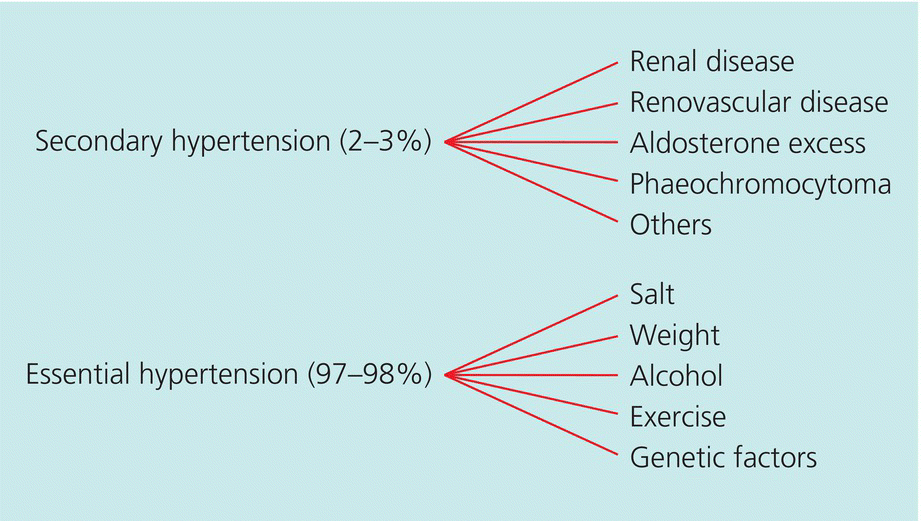
Balance between cardiac output and peripheral resistance
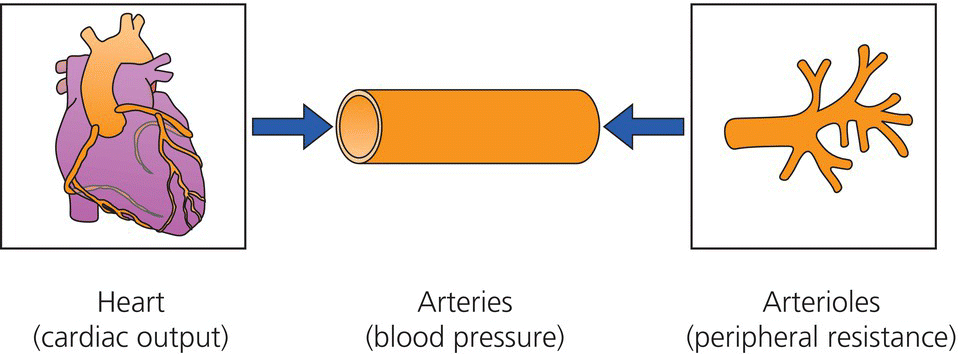
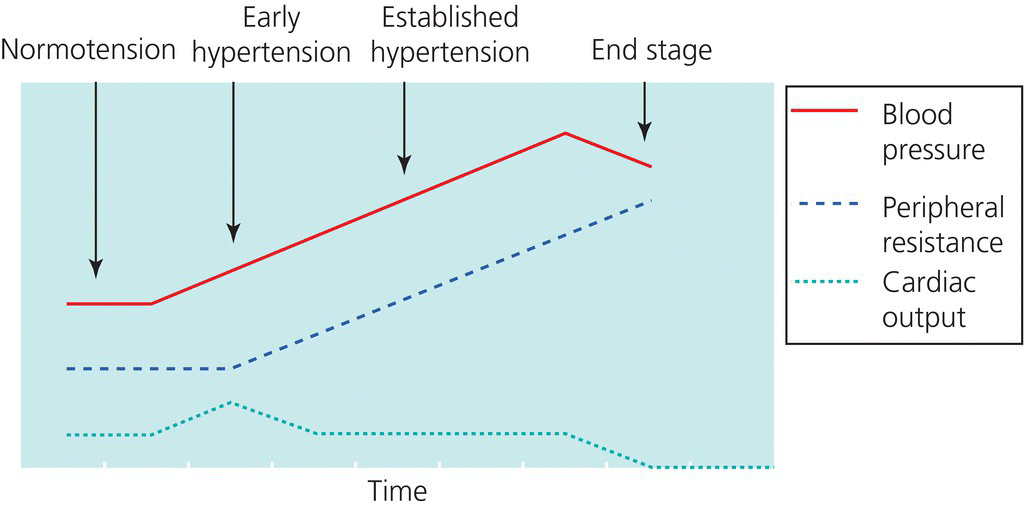
Renin–angiotensin–aldosterone system
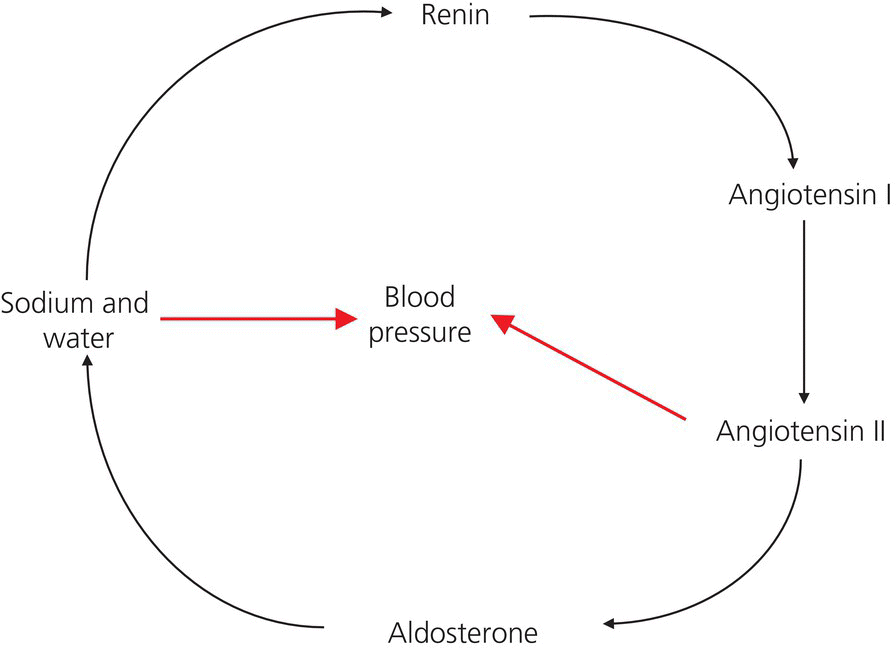
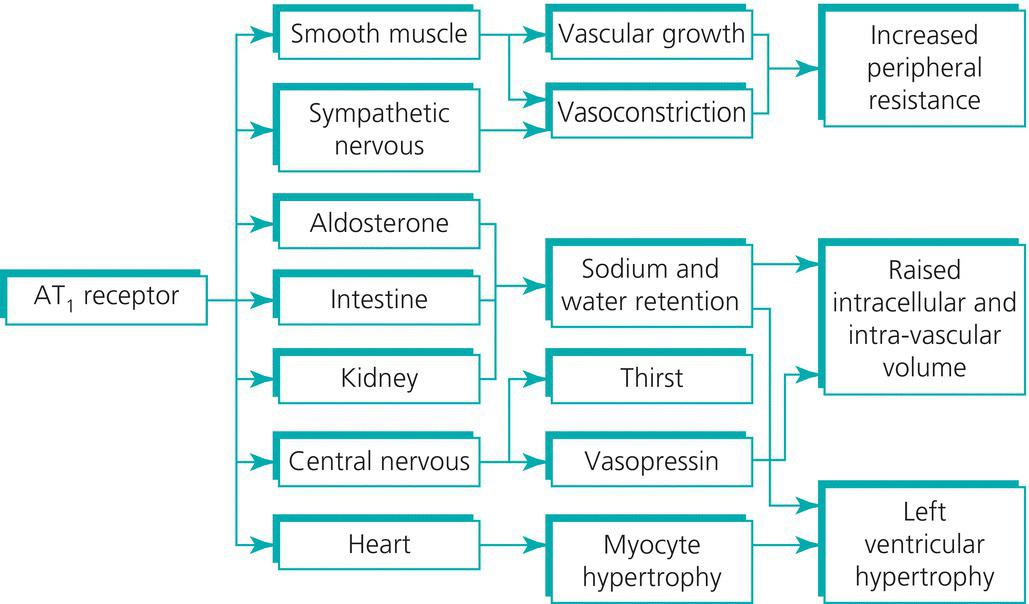
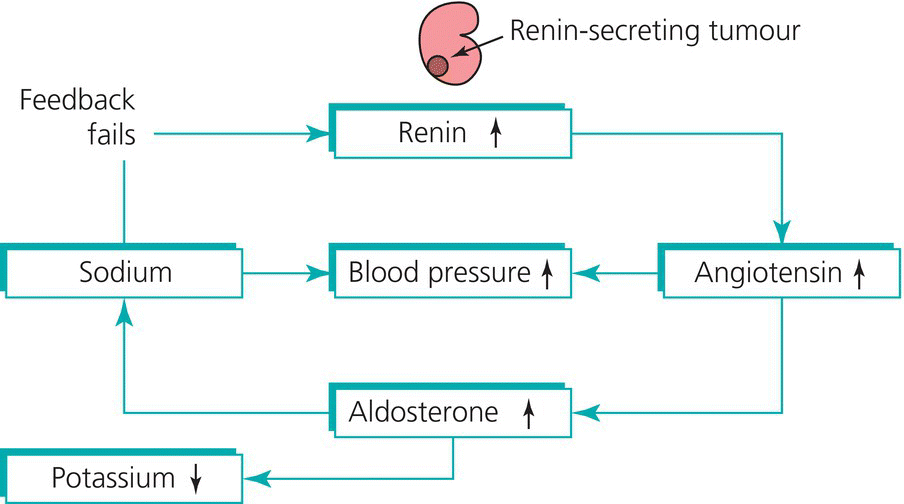
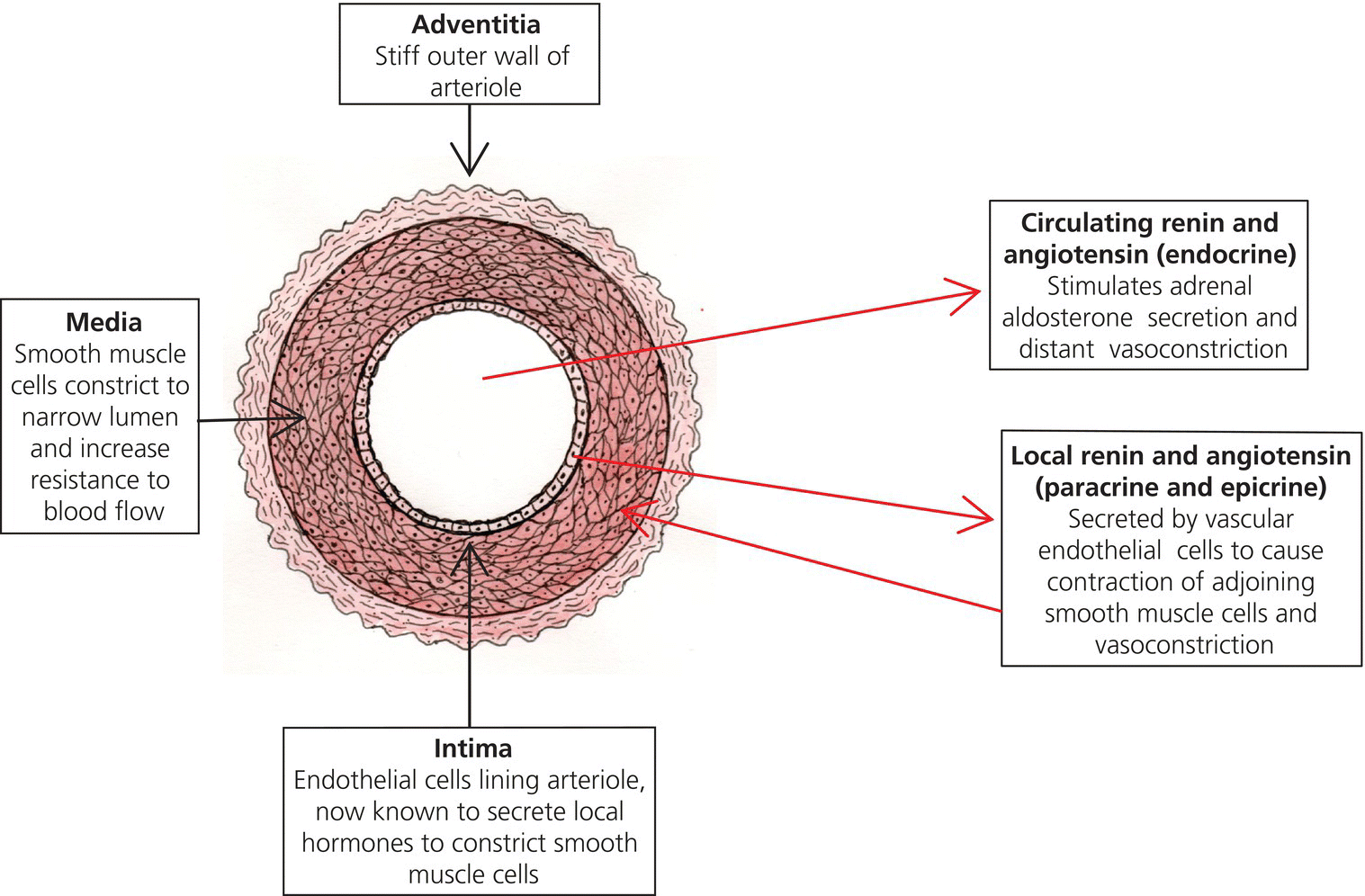
Volume-mediated hypertension
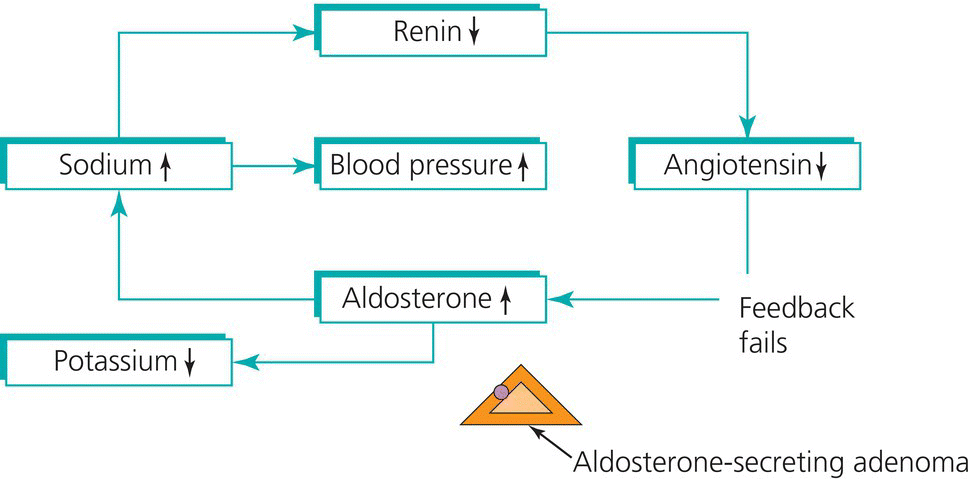
Autonomic nervous system

Pathophysiology of hypertension
Only gold members can continue reading. Log In or Register to continue

Full access? Get Clinical Tree


